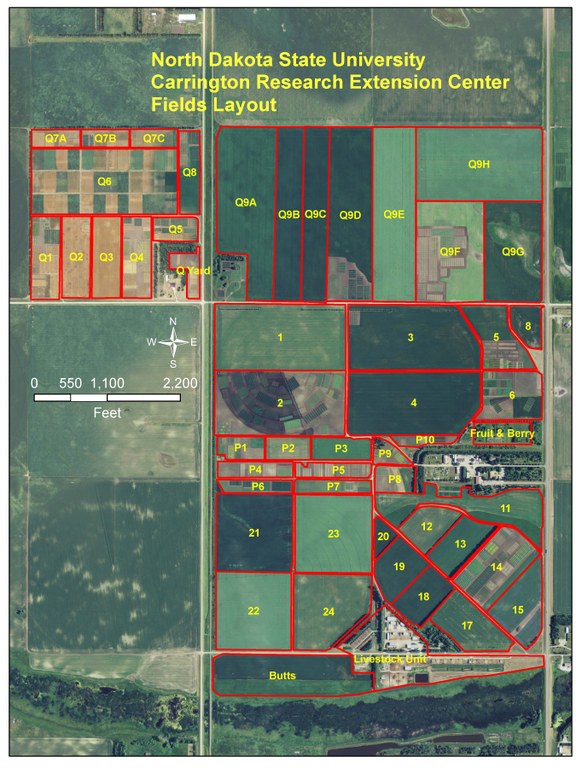Planting Plans 2018
The fall and winter seed-conditioning season has finally wrapped up at the CREC. It started in late July and finished in late February. We conditioned 36 different seed lots. Depending on the crop type, three or six pound samples of each seed lot are sent to the ND State Seed Department (SSD) for purity and quality analysis. About 25 seed samples representing carryover seed lots are also sent to the SSD for updated germinations. With the test results now completed, it is time to finish planning for the next cropping season.
In late January, the staff of the CREC Foundation Seedstocks Program starts putting together planting plans for the next growing season. These plans are time consuming. Proper planning involves scrutiny of the crop and variety that was planted on a field during previous growing seasons. Often, multiple changes occur to most fields before the best possible variety is selected for a field. Listed below are some of the points we follow to develop our planting plan.
- All of the CREC fields have a unique letter or number that provides field identification. A field map labeled with an identifier shows the location of each field. This helps with tracking the crop history from one year to the next. If needed, we can look back over many years to verify the crop and variety that was planted on a specific field.
- All fields are soil sampled in the fall following harvest. Knowing the fertility status we have in the soil allows for proper fertilization for the next crop. Commercial fertilizer or beef manure is applied as needed to the fields in either the fall or spring. Manure is applied to small grain fields that will be planted to a broadleaf crop the next season. We can’t apply manure to fields to be planted to a small grain due to the potential of volunteers from the manure.
- Field history is looked at going back multiple years. The large number of crops and varieties help the CREC spread out the rotations between crops. When needed, we can avoid fields for 4 or 5 years before planting the same crop.
- It is vital to follow the SSD’s requirement of crop rotation for durum. The field must have a previous two-year history of no wheat. The CREC dedicates certain fields to having only either durum or wheat in their rotation. The SSD’s requirement and this practice is critical to help maintain durum purity.
- The CREC always tries to plant crop opposites in sequence. We are looking for seed separation opportunities during the conditioning processes. To create a seed separation you must have potential differences. The differences to consider could be length, size, weight and width.
- The CREC uses their input products following best management practices. We use seed treatments as needed. Pre-plant and post-emerge herbicides help with weed control. The CREC also will use a fungicide or insecticide when necessary to ensure good production and a quality seed. The products used on each field are documented and filed for future reference. The herbicide history is especially important when making decisions on the field’s next crop to be planted. With the many crops grown by the CREC, it is very important to follow label directions and know the plant-back restrictions for the next growing season.

If you wish to see our research closer up during the growing season, please stop at the main office so we can point you in the right direction. We have several staff collecting data and carrying out daily tasks and we want everyone to be safe. We wish you the best of luck as you gear up for planting in 2018.
David Copenhaver
David.Copenhaver@ndsu.edu
Foundation Seedstocks Project Leader


